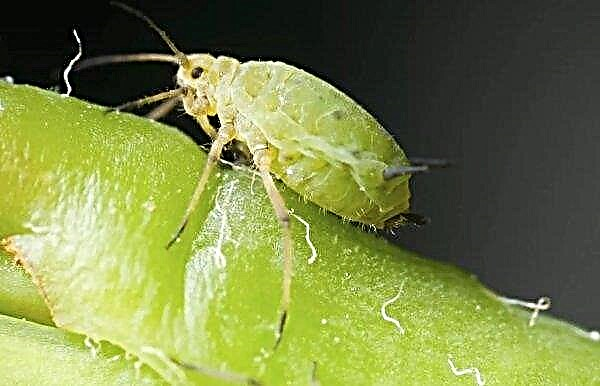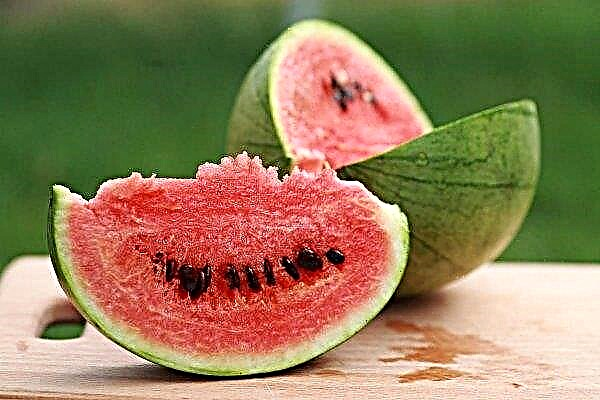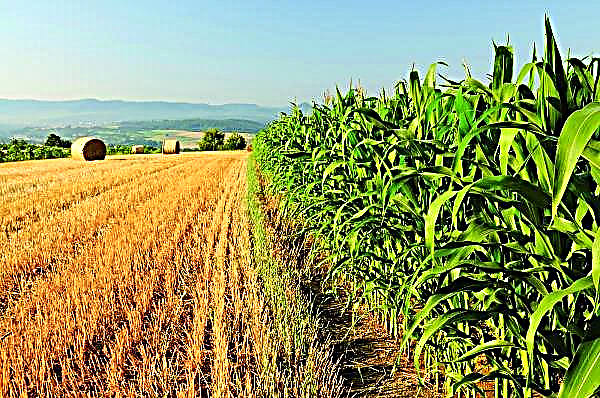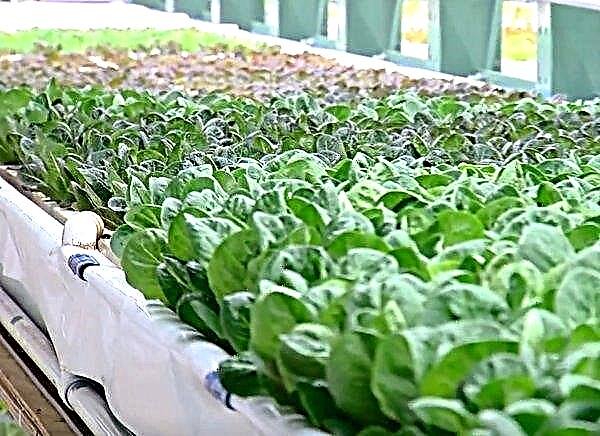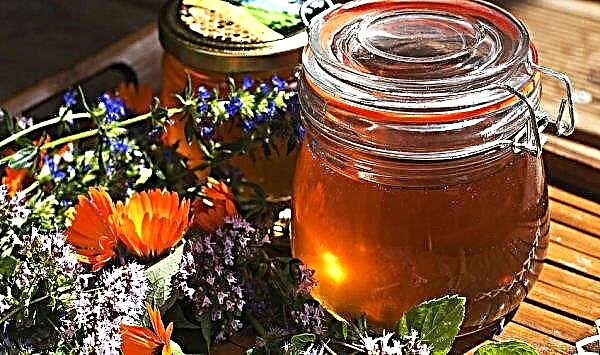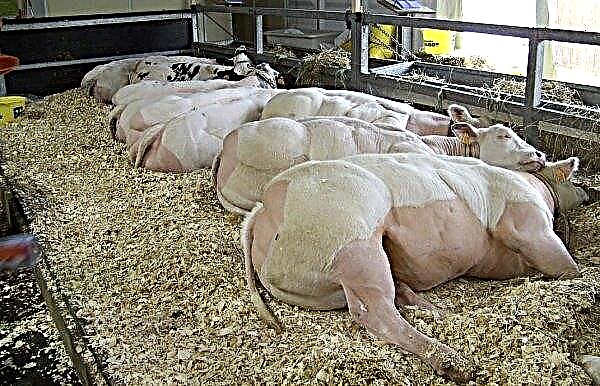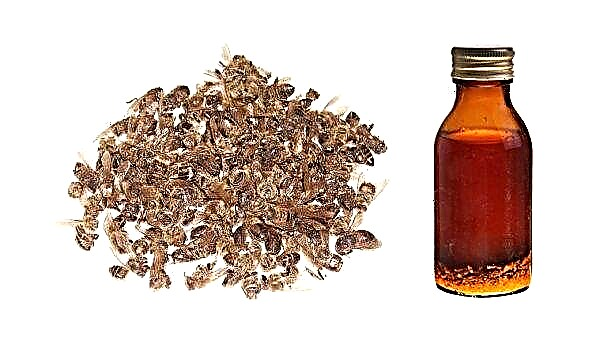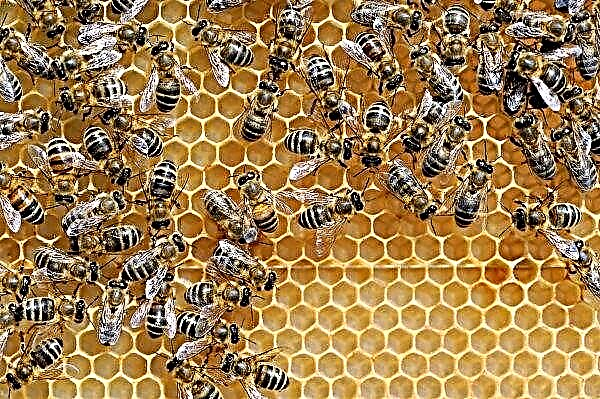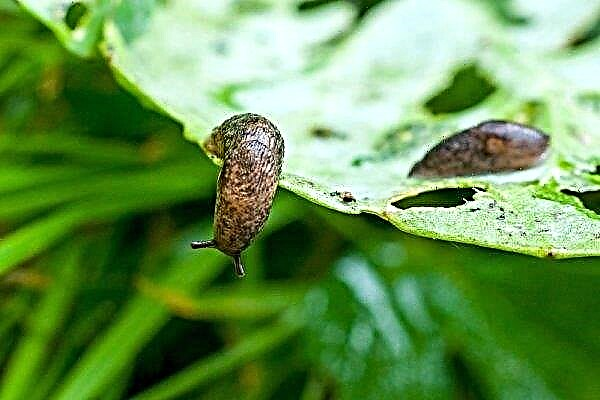When summers are cool and humid, many garden crops suffer from diseases. One of the common, affecting dill plantations is powdery mildew. In the article we will talk about why dill turns white in the garden, and how to deal with it.
What kind of white coating on dill, is it possible to eat?
When affected by powdery mildew, the green looks as if sprinkled with silver paint. Then the dill quickly fades, loses taste and aroma and becomes unfit for food. At the first signs of the disease, the culture must be treated with special drugs.
Did you know? The ancient Romans gave dill bouquets to their chosen ones as a sign of great love and devotion.
Causes and signs of occurrence
The causative agent of the disease is the fungus Erysiphe umbelliferarum. For its development, a temperature of +18 ... + 20 ° С and humidity of 70–80% is sufficient. Mushroom propagation is provoked by a sharp change in weather from dry and hot to wet and cool.
The disease spreads between plants of the same species, as well as by spray of irrigation water or wind.
What to do, than to process dill from powdery mildew?
If you notice the disease in time, single lesions can be removed using special drugs or folk remedies.
Biofungicides today are the best means of combating fungal diseases. They contain live bacterial cultures that do not harm the plant.Important! Do not get carried away with nitrogen fertilizers - their excess can lead to the appearance of a fungal disease.
Chemicals
Preparations that can be purchased at a specialized store:
- Fitosporin - a new generation biofungicide. It acts immediately as soon as it enters the affected area of the plant. Two treatments are carried out with an interval of three days. If necessary, you can add one more. The powder is soaked a few hours before processing according to the instructions.
- Bayleton - a broad spectrum fungicide. It penetrates the plant and begins to act 3-4 hours after application. In addition to combating fungus, it also reduces the permeability of cell membranes.
- Tiovit Jet - fungicide and insecticide. Non toxic, effective and economical drug. The main active ingredient is sulfur, which when in contact with water forms a solution for spraying.

Folk remedies
Recipes from improvised means that can be used if dill is covered with white coating:
- A liter of boiling water pour half a glass of ash and insist the mixture for two days. Then strain, add 4–5 g of laundry soap diluted with water to a mushy state. The resulting mixture should be treated with the affected plants twice at weekly intervals.
- Pour a third of a bucket of fresh cow manure with cold water and insist for three days, stirring occasionally. Then the solution must be filtered and diluted with ten parts of water. Fresh mullein is ready for evening spraying. For the next procedure, you need to prepare a new portion.
- Half a bucket of weeds, filled with hot water to the top, allows you to prepare fermented water for spraying. The mixture is insisted for several days, then filtered - the solution is ready.
Did you know? People in the Middle Ages believed that the aroma of dill protects from witchcraft charms.
Prevention
Preventive measures against powdery mildew:
- it is not necessary to water too often and intensively beds with dill;
- it is necessary to monitor the state of greenery in order to notice the disease in time;
- it is possible to periodically conduct pollination of culture sulfur
- in the autumn, you need to prepare the beds for the next season: remove the remains of plants in which spores of powdery mildew can overwinter;
- next year, it is better to transplant dill to another place, pre-heating the seeds;
- phosphorus and potassium dressing increase the "immunity" of the plant.

Powdery mildew is a very unpleasant, but not catastrophic disease. Often its appearance does not depend on the degree of care, so you should not blame yourself if this is found in your garden. It is enough to notice the problem in time and apply one of the above effective means.



